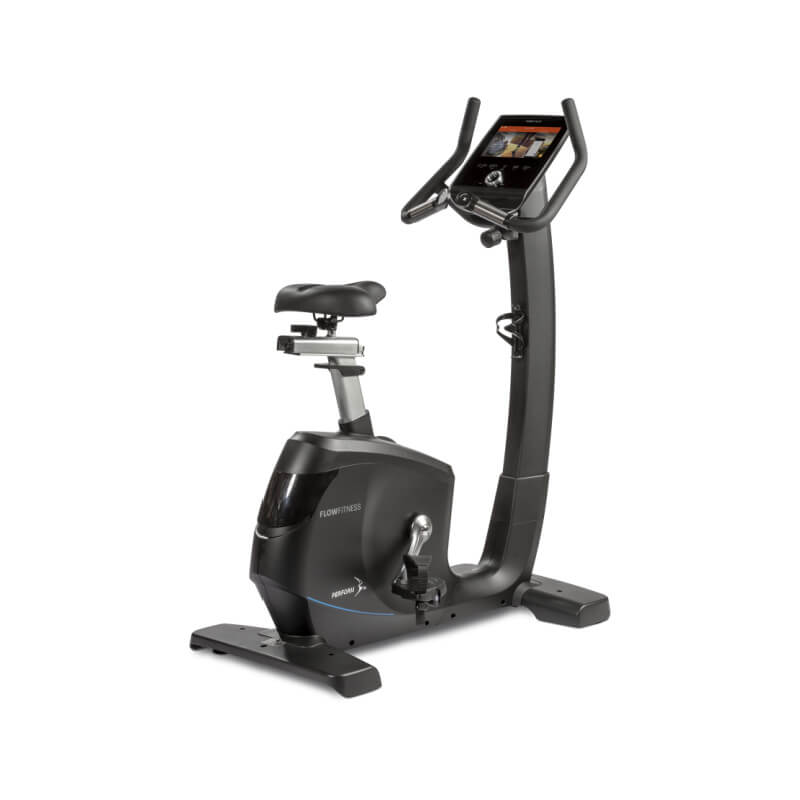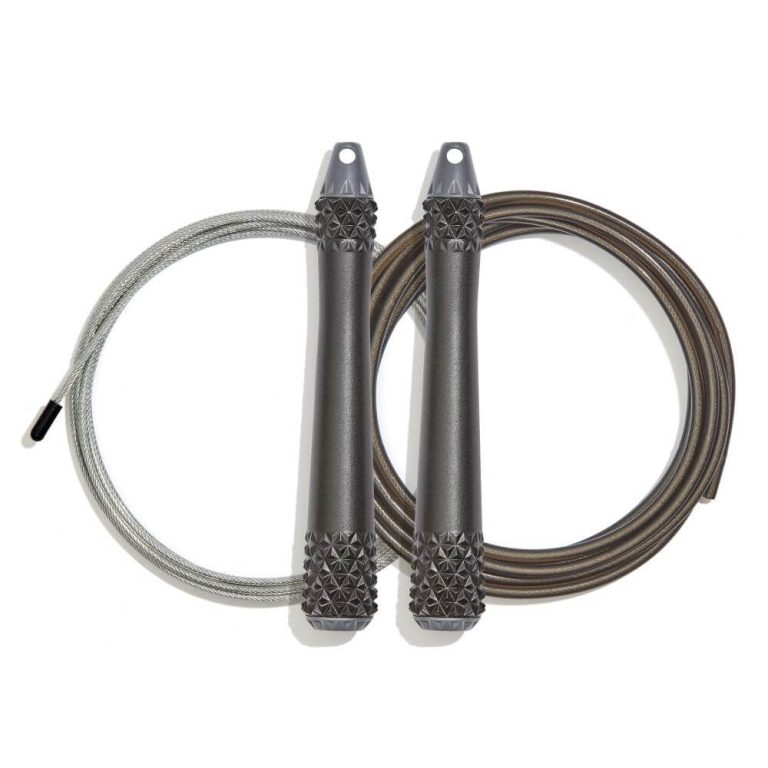If you’re looking for a convenient and effective way to improve your fitness at home, exercise bikes might just be your perfect match. With their ability to provide a low-impact cardiovascular workout, exercise bikes are suitable for individuals of all fitness levels. Whether you’re looking to shed a few pounds, increase your stamina, or simply stay active, these versatile machines offer a range of benefits that can help you achieve your fitness goals. So, hop on the saddle, pedal your way to a healthier you, and discover why exercise bikes are a fantastic choice for all-round fitness. Yes, exercise bikes are indeed excellent for all-round fitness. They offer numerous benefits that contribute to improved cardiovascular health, muscle conditioning, weight loss, joint mobility, cardiovascular health, mental well-being, and tailored workouts. Whether you’re a beginner or an experienced athlete, exercise bikes can provide an effective and convenient way to stay fit and healthy.
Table of Contents
ToggleImproved Cardiovascular Health
One of the major benefits of using an exercise bike is the improvement of cardiovascular health. Regular cardiovascular exercise helps strengthen the heart and lungs, promoting better overall fitness. By consistently using an exercise bike, you can increase your heart rate, improve blood circulation, and enhance lung function. This, in turn, can reduce the risk of heart disease, lower blood pressure, and increase stamina.
Muscle Strengthening
In addition to cardiovascular health, exercise bikes also contribute to muscle strengthening. Cycling on an exercise bike predominantly targets the leg muscles, including the quadriceps, hamstrings, and calves. These muscles are engaged when you pedal the bike and help build strength and endurance. Furthermore, an exercise bike also activates the core muscles, including the abdominals and lower back, which aids in overall stability and posture.
Low Impact Exercise
Another advantage of exercise bikes is that they offer low-impact exercise. Unlike some other forms of aerobic exercise, such as running or jumping, cycling on an exercise bike puts minimal stress on the joints. This makes it an ideal option for individuals with joint injuries or conditions, as it reduces the risk of exacerbating pain or causing further damage. It allows you to still get a good workout without the added strain on your joints.
Convenience and Accessibility
Exercise bikes provide the convenience and accessibility of working out from the comfort of your own home. Unlike going to a gym or participating in outdoor activities, exercise bikes can be used at any time, regardless of weather conditions or time restrictions. Having an exercise bike at home ensures that you can easily incorporate exercise into your daily routine without the need for travel or expensive gym memberships. This accessibility makes it easier to stay consistent with your fitness goals.
Aerobic Fitness
Increased Endurance
Regularly using an exercise bike can significantly increase your endurance levels. As you pedal and progress in your workouts, your cardiovascular system becomes more efficient at supplying oxygen and nutrients to your muscles. Over time, this leads to improved stamina during physical activities and reduces feelings of fatigue. Increased endurance can benefit your daily life by allowing you to participate in various activities for longer periods without feeling tired.
Improved Heart Health
Exercise biking is great for improving heart health. As you engage in aerobic exercise, such as cycling, your heart pumps blood more efficiently, strengthening the cardiac muscles. This can lower your resting heart rate and improve heart function. Regular exercise biking can also help regulate blood pressure, reduce bad cholesterol levels, and decrease the risk of developing cardiovascular diseases such as heart attacks or strokes.
Calorie Burning
If your goal is to burn calories and lose weight, exercise bikes are an excellent choice. Cycling is a highly effective calorie-burning exercise that helps you create a calorie deficit, leading to weight loss. The number of calories burned depends on your weight, intensity level, and duration of the workout. On average, a 30-minute cycling session can burn between 200-400 calories. Consistent use of an exercise bike, along with a healthy diet, can help you achieve and maintain a healthy weight.
Muscle Conditioning
Leg and Lower Body Strength
Cycling on an exercise bike primarily targets the muscles in your legs and lower body. Regular biking workouts can help strengthen and tone the muscles in your quadriceps, hamstrings, calves, and hips. As you increase the resistance on the bike, the muscles have to work harder, leading to greater strength gains. Strong leg and lower body muscles are beneficial for overall stability, balance, and daily activities like walking or climbing stairs.
Core Strengthening
While cycling predominantly targets the leg muscles, it also engages the core muscles. Maintaining proper posture and stability on the bike requires activation of the abdominal and lower back muscles. Over time, cycling can effectively strengthen your core, enhancing overall stability and reducing the risk of back pain or injury. A strong core is essential for maintaining proper alignment and posture during everyday activities and other forms of exercise.
Upper Body Activation
Although the primary focus of exercise biking is on the lower body, you can also engage your upper body muscles for a more comprehensive workout. Many exercise bikes come equipped with handlebars that allow you to engage your arms, shoulders, and upper back muscles while cycling. This simultaneous upper body activation helps to create a more balanced and full-body workout experience.
Weight Loss and Fat Burning
Effective Calorie Expenditure
Exercise biking is a great way to burn calories and aid in weight loss. As mentioned previously, cycling is a calorie-burning exercise that helps create a calorie deficit. The more calories you burn, the more weight you can lose. By regularly using an exercise bike and incorporating high-intensity interval training (HIIT) or longer endurance sessions, you can maximize the calorie expenditure and accelerate your weight loss journey.
Boosted Metabolism
Regular exercise bike workouts contribute to an increased metabolic rate. When you engage in aerobic exercise, such as cycling, your body’s metabolism is temporarily elevated even after your workout. This means that you continue to burn calories at a higher rate even during rest or low-intensity activities. This elevated metabolism can aid in weight loss and help prevent weight gain over time.
Reduced Body Fat
Exercise biking can play a significant role in reducing overall body fat percentage. While spot reduction is not possible, consistent cardiovascular exercise helps burn calories and promotes overall fat loss. As your body develops more lean muscle mass from regular biking workouts, your body’s metabolism increases, helping to target fat stores and promote a leaner physique.
Joint Mobility
Low-Impact Exercise Option
Exercise bikes provide a low-impact exercise option that is more gentle on the joints compared to high-impact activities like running or jumping. This makes exercise biking an ideal choice for individuals with joint conditions or injuries. By choosing a low-impact exercise option, you can minimize stress on the joints while still reaping the benefits of cardiovascular exercise.
Minimal Stress on Joints
As mentioned earlier, exercise biking puts minimal stress on the joints, making it an accessible exercise option for those with joint issues. Unlike activities that involve repetitive pounding or jarring motions, such as running or aerobics, cycling is a smoother and less impactful movement. This reduces the risk of aggravating joint pain or causing further injury, allowing individuals to exercise comfortably and safely.
Increased Range of Motion
Consistently using an exercise bike can contribute to increased joint mobility and range of motion. The repetitive pedaling motion helps to lubricate the joints and improve their flexibility. This is particularly beneficial for individuals who may have limited range of motion due to joint stiffness or age-related conditions. By incorporating exercise biking into your fitness routine, you can maintain and improve joint mobility over time.
Cardiovascular Health
Increased Heart Rate
One of the key features of exercise biking is its ability to increase your heart rate. Regular cardiovascular exercise, such as cycling, challenges your cardiovascular system, causing your heart to beat faster. This increased heart rate helps strengthen the heart, making it more efficient at pumping oxygen-rich blood to your muscles and throughout your body. A strong and healthy heart is essential for overall cardiovascular health.
Improved Blood Circulation
Engaging in aerobic exercise, like cycling, promotes improved blood circulation. As you pedal on an exercise bike, your muscles require more oxygen and nutrients, prompting increased blood flow to these areas. Efficient blood circulation delivers oxygen and nutrients to your muscles, helping them work efficiently and reduce the risk of muscle fatigue. Improved blood circulation also aids in waste removal and promotes overall cellular health.
Enhanced Lung Function
Exercise biking can also improve lung function and capacity. As you engage in aerobic exercise, your breathing rate increases, requiring your lungs to work harder to supply oxygen to your body. Over time, the lungs adapt and become more efficient at exchanging oxygen and carbon dioxide. This leads to improved lung function and increased lung capacity, allowing you to engage in activities that require greater endurance and stamina.
Mental Health and Well-being
Stress Reduction
Exercise biking offers numerous mental health benefits, with stress reduction being one of the most notable. Engaging in physical activity releases endorphins, which are natural mood-boosting chemicals in the brain. Riding an exercise bike can provide a sense of relaxation and stress relief, helping to alleviate symptoms of anxiety and depression. The rhythmic pedaling motion combined with the release of endorphins can provide a mental escape and improve overall well-being.
Release of Endorphins
Endorphins, often referred to as “feel-good” hormones, are released during exercise. Cycling on an exercise bike increases your heart rate and stimulates the release of endorphins, leading to feelings of happiness and well-being. These endorphins act as natural painkillers and can enhance your mood, reducing feelings of stress and promoting a more positive outlook on life.
Improved Sleep Quality
Regular exercise biking can also contribute to improved sleep quality. Engaging in physical activity helps regulate your body’s internal clock and promotes healthy sleep patterns. The release of endorphins during exercise can also help relax your mind and body, making it easier to fall asleep and achieve a restful night’s sleep. Quality sleep is essential for overall well-being, as it allows your body to repair and rejuvenate.
Tailored Workouts
Adjustable Resistance Levels
Exercise bikes offer adjustable resistance levels, allowing you to tailor your workouts to your fitness level and goals. Whether you’re a beginner or an advanced cyclist, you can increase or decrease the resistance to create a more challenging or comfortable workout. Higher resistance levels provide a more intense workout that engages your muscles and cardiovascular system, while lower resistance levels allow for a gentler, recovery-oriented exercise session.
Variety of Training Programs
Many exercise bikes come with pre-programmed workout options that cater to different fitness goals and preferences. These training programs often include interval training, hill climbs, and customizable workouts. Each program offers a unique challenge and helps prevent boredom by adding variety to your workouts. By incorporating different training programs into your exercise routine, you can keep your workouts fresh and engaging, maximizing your fitness results.
Customizable Intensity
Exercise bikes allow you to customize the intensity of your workouts based on your individual preferences and fitness goals. Whether you prefer steady-state cardio or high-intensity interval training (HIIT), an exercise bike can accommodate your needs. You can choose the duration, speed, and resistance level that suits your fitness level and progression. This customization ensures that you can continuously challenge yourself and make progress towards your fitness goals.
Joint-Specific Considerations
Knee Conditions
If you have knee conditions such as arthritis or previous injuries, using an exercise bike can be a suitable form of exercise. The low-impact nature of cycling minimizes stress on the knees, making it a safe option. However, it’s important to adjust the seat height and position properly to ensure proper alignment and minimize strain on the knee joint. If you have severe knee pain or specific concerns, it’s advisable to seek guidance from a healthcare professional or physical therapist before starting an exercise biking routine.
Back Pain
Exercise biking can be beneficial for individuals with back pain, particularly if the pain is aggravated by high-impact activities. Cycling on an exercise bike provides a low-impact alternative that puts less strain on the spine. However, it’s crucial to maintain proper posture and avoid hunching or leaning forward during your workouts. Adjusting the bike’s seat and handlebars to ensure proper alignment can help alleviate any potential strain on the back. If you have chronic or severe back pain, it’s recommended to consult with a healthcare professional before beginning an exercise biking routine.
Hip Issues
For individuals with hip issues, exercise bikes can offer a safe way to exercise without placing excessive stress on the hip joints. The controlled, circular motion of cycling helps to strengthen the muscles around the hip, providing stability and support. It’s important, however, to adjust the bike’s seat height and ensure proper alignment to avoid any strain on the hips. If you have significant hip pain or specific concerns, it’s advisable to consult with a healthcare professional or physical therapist before incorporating exercise biking into your fitness routine.
Conclusion
Exercise bikes provide a versatile and effective tool for all-round fitness. They offer numerous benefits such as improved cardiovascular health, muscle conditioning, weight loss, joint mobility, enhanced mental well-being, and tailored workouts. Whether you’re a beginner or an experienced athlete, exercise biking can be an accessible and convenient option to achieve your fitness goals.
When considering exercise biking for an all-round fitness routine, it’s important to consider personal factors such as your current fitness level, any specific health conditions, and your preferences. Remember to start at a comfortable intensity level and gradually increase the duration and intensity of your workouts as your fitness improves. If you have any concerns or questions, it’s always advisable to consult with a fitness professional or healthcare provider to ensure a safe and effective exercise routine.
So why wait? Get on that exercise bike and start reaping the numerous benefits it offers for your overall fitness and well-being. Enjoy the convenience, accessibility, and transformative power of exercise biking to achieve a healthier and happier you.







